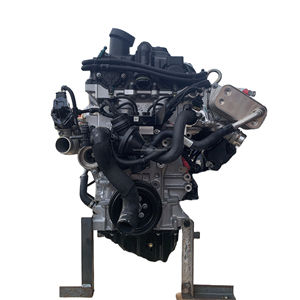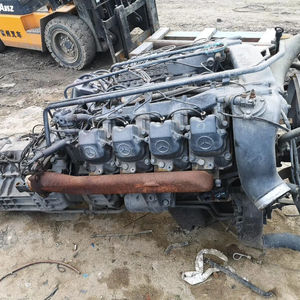Opel Corsa Engine: Everything You Need to Know Prior To Acquiring
Opel Corsa Engine: Everything You Need to Know Prior To Acquiring
Blog Article
Exploring the Inner Functions of a Compact Car's Engine System
As chauffeurs, we frequently consider approved the elaborate processes that happen within the confines of our lorry's engine system. The small yet complex equipment that pushes us forward is a wonder of engineering accuracy and sychronisation. From the controlled surges in the combustion chamber to the careful timing of fuel injection, every element plays a vital duty in the smooth operation of the engine. In this expedition of a portable vehicle's engine system, we will certainly decipher the inner operations of this mechanical symphony, dropping light on the secrets that drive us ahead on our daily trips.
Combustion Process Review
The combustion process in a portable vehicle's engine system is an important mechanism that effectively transforms gas right into energy to power the car. This procedure takes place within the combustion chamber of the engine, where fuel and air mix, spark, and generate regulated explosions. The combustion process is composed of 4 major phases: intake, compression, exhaust, and power.
Throughout the consumption stage, the piston relocates downward, attracting in a combination of air and fuel into the combustion chamber. This descending movement produces the power required to drive the automobile. This cyclic combustion procedure is essential to the operation of a small automobile's engine system, ensuring reliable power conversion for propulsion.
Piston and Cyndrical Tube Interaction

The piston's accurate fit within the cylinder is vital for preserving ideal compression and stopping power loss during combustion. Tight clearances between the piston and cylinder walls ensure efficient sealing, permitting the piston to relocate efficiently without permitting gases to leakage past. Appropriate lubrication is likewise important to decrease friction and wear in between these parts, improving durability and performance.
Furthermore, the layout and products utilized in producing the piston and cylinder influence engine performance and longevity. Modern engines usually use light-weight yet resilient materials like light weight aluminum alloys for pistons and cylinder liners to lower inertia and improve thermal effectiveness. Overall, the unified interaction between the piston and cyndrical tube is essential to the engine's functionality and total performance.
Fuel Shot System Performance
Fuel injection systems in portable automobile engines play a vital role in specifically providing gas to the combustion chamber for controlled and effective ignition. The fuel shot system functions by infusing fuel right into the visit here burning chamber at the ideal moment during the engine's operation (opel corsa engine). This precise timing guarantees that the gas blends evenly with the air for proper burning, causing enhanced gas efficiency and lowered exhausts
There are primarily 2 kinds of fuel shot systems used in small lorry engines: port fuel shot (PFI) and straight fuel shot (DFI) PFI systems infuse fuel into the consumption port before the intake shutoff, while DFI systems infuse fuel directly right into the burning chamber. Both systems have their advantages, with DFI using better fuel atomization and PFI supplying a more economical remedy.
Understanding Engine Cooling Mechanisms
Effective procedure of a portable vehicle's engine depends greatly on the performance of its cooling mechanisms. Engine cooling is vital to protect against overheating, which can result in severe damages and lowered efficiency. The air conditioning system in a compact car usually includes numerous parts collaborating to regulate the engine temperature. One essential part is the radiator, which utilizes coolant to take in warm from the engine. As the warm coolant streams with the radiator, it launches warm into the air, cooling off before returning to the engine. The water pump distributes the coolant with the engine and radiator, making sure a regular circulation to control temperature level. Furthermore, the thermostat assists manage the coolant flow to maintain optimal engine temperature. Some vehicles additionally have cooling down followers that trigger when additional cooling is needed, such as throughout hefty web traffic or heat. Understanding these engine cooling devices is crucial for preserving the performance and longevity of a portable lorry's engine system.

Exhaust System Components Explained
The optimum functioning of a portable vehicle's engine air conditioning mechanisms depends on a corresponding system known as the exhaust system, which makes up numerous vital parts for guaranteeing reliable emissions and engine efficiency. The exhaust manifold accumulates exhaust gases from the engine's cylinders visite site and courses them to the catalytic converter.
One critical component of the exhaust system is the oxygen sensor, which checks the oxygen levels in the exhaust gases to assist manage gas consumption and make sure optimum engine performance. opel corsa engine. Furthermore, the resonator might exist in some exhaust systems to reduce noise degrees. On the whole, the exhaust system plays an important function in keeping engine performance, reducing damaging exhausts, and making certain a quieter driving experience for compact car proprietors

Final Thought
In verdict, the portable vehicle's engine system is a complicated mix of parts that interact to promote the burning process, convert fuel into energy, and get rid of waste gases. Recognizing the internal operations of the engine system, including the piston and cylinder interaction, fuel injection system, engine cooling systems, and exhaust system elements, is vital for keeping optimum efficiency and performance of the vehicle.
The combustion process in a compact vehicle's engine system is a vital system that effectively converts fuel into energy to power the vehicle.Fuel injection systems in portable vehicle engines play a critical role in precisely delivering gas to the burning chamber for reliable and controlled ignition.There are primarily two types of gas shot systems utilized in small car engines: have a peek here port fuel shot (PFI) and straight fuel injection (DFI) Understanding these engine air conditioning devices is crucial for preserving the performance and long life of a portable automobile's engine system.
The ideal functioning of a portable automobile's engine cooling mechanisms depends on a corresponding system understood as the exhaust system, which makes up various essential parts for making sure efficient exhausts and engine efficiency.
Report this page